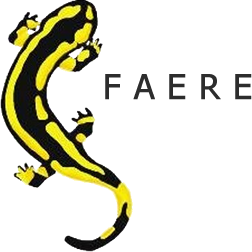WP 2025.10 The impact of income inequality on public environmental expenditure with green consumers
Lesly Cassin- Paolo Melindi-Ghidi – Fabien Prieur
Abstract
This article analyzes the impact of income inequality on environmental policy in the presence of green
consumers. We first perform an empirical analysis using a panel of European countries over the period 1995-2021. The results show a negative relationship between inequality and public environmental expenditure, which is weaker with higher inequality. We also find a negative correlation between environmental expenditure
and green consumption, that highlights the substitutable nature of the relationship between the two variables.
We next develop a model with two main ingredients: citizens with different income capacities have access to two commodities that differ in terms of environmental impact, and they vote on the environmental policy.
In equilibrium, the population is divided into two groups, conventional vs green consumers. An increase in inequality raises the marginal cost of policy through size and composition effects. The higher the equilibrium tax, the larger the overall effect. This provides us with an explanation of the main empirical result.
WP 2025.09 Gender and climate change: do men emit more GHG than women?
Antonin Pottier -Emmanuel Combet – Simona de Lauretis
Abstract
Using consumption-based emissions of French households, we show that pooling households of different size and composition cannot provide reliable estimates of the
effect of gender of the head of household on emissions. Our empirical strategy therefore focuses on one-person households. With multi-variate regressions, we find that, other things being equal, there is no significant difference between single men and women, provided they are younger than 80. Women over 80 years old emit less than their male.
WP 2025.08 The adoption of CCS by the cement industry: a game theoretic analysis
Jean-Pierre Ponssard – Quentin Hoarau
Abstract
This paper analyzes the adoption of Carbon Capture and Storage (CCS) in the cement industry, a hard-to-abate sector, by modeling firms’ strategic choices of adoption timing as a continuous-time game under Cournot competition. The model considers a polluting technology whose cost increases over time due to the social cost of carbon, and a clean CCS technology involving a fixed sunk cost.
We find that imperfect competition in the cement sector delays CCS adoption, with a Pareto-dominant Nash equilibrium corresponding to simultaneous adoption.
We examine two types of public policies to correct this inefficiency: a subsidy on the fixed cost of CCS and a time-dependent subsidy on profit flows. While both instruments can lead to socially optimal adoption, the fixed-cost subsidy is easier to implement but more expensive.
Our numerical application shows that, in the absence of policy intervention, CCS adoption is delayed by ten years relative to the social optimum. To achieve the optimal timing, the fixed-cost subsidy would need to cover about 70\% of the investment cost, while the time-dependent subsidy would be roughly three times less expensive.
WP 2025.07 Social Unrest and Environmental Performance
Mahdi Fawaz – Donatella Gatti
Abstract
There is a growing consensus that policies such as carbon taxes are needed to improve environmental performance. We propose a theoretical framework and a model to examine how environmental concerns determine political support for carbon taxation and the incentives for the poor to revolt, replace the incumbent government, and achieve a fairer distribution of income. Our main result is that the incentive to revolt is an inverted U-shaped function of environmental performance. On the empirical side, we construct a normalized Social Unrest Index (SUI) based on riots and battles data from the ACLED database. Then, we analyze the determinants of SUI in a panel of 211 countries between 1997 and 2022 including a quadratic term of the EPI index (Yale University). We find an inverted U-shaped relationship that is robust in all the specifications tested. In autocratic regimes, as EPI rises from 30% to 40%, SUI predicted average almost doubles from 12.8% to 20.4%, while it falls at higher EPI levels. Our results have important policy implications.
WP 2025.06 Does income inequality influence health vulnerability to pollution? Evidence from France
Karine Constant – Marion Davin – Emmanuelle Lavaine
Abstract
This study investigates whether income inequality within a population influences the health effects of pollution. Specifically, we empirically estimate the causal impact of particulate matter (PM10) on mortality in France, using wind direction as an instrumental variable, and explore how income inequality modifies this relationship. Our findings reveal a statistically and economically significant impact of pollution exposure on the mortality of individuals aged 50 or older, which intensifies in municipalities with higher levels of income inequality. More precisely, while the effect of PM10 is not significant in municipalities with the lowest levels of disparities, it is significant for the others and increases with the level of inequality within the municipalities. The impact of PM$_{10}$ on the mortality of individuals aged 50 or older in the top 33% of municipalities with the highest inequality is up to twice as large as in municipalities with intermediate levels of inequality. This result is particularly striking given that it concerns a country like France, which has relatively low income inequality. To provide a comprehensive understanding of the potential underlying mechanisms, we develop a theoretical model and empirically test its predictions. We conclude that the observed variation in vulnerability to pollution across municipalities, stratified by inequality levels, could have been but is not attributable to differences in public health expenditure, pollution exposure (between and within municipalities), or poverty prevalence and intensity. Our results suggest that inequality plays a significant role in environmental health, worthy of further research.
WP 2025.05 Informing the uninformed, sensitizing the informed: The two sides of consumer environmental awareness
Dorothée Brécard – Mireille Chiroleu-Assouline
Abstract
WP 2025.04 Agricultural Productivity Growth and Deforestation in the Tropics
Abstract
We analyze the impact of agricultural productivity growth on tropical deforestation. Our dynamic model of forest-to-farmland conversion incorporates costs and market constraints on agricultural output, emphasizing that productivity growth, rather than its absolute level, shapes deforestation patterns. Addressing the Jevons’ paradox and Borlaug hypothesis, the model predicts that rising agricultural productivity, reflected by declining fertilizer price growth, has an ambiguous effect on deforestation. Using tropical forest loss data (2000-2022) and fertilizer price variations, we find a negative correlation between fertilizer price growth and deforestation, particularly in regions with high market potential. Without the 10% annual rise in fertilizer prices over the period, deforestation rates would have been 57% faster, representing 6.6 million additional hectares annually. Conversely, the 3% annual increase in crop prices has a minimal impact on deforestation. Our results highlight that protected areas do not mitigate the adverse effects of fertilizer price growth on deforestation.
WP 2025.03 Fueling the energy transition with fossil (not quite) stranded assets
Abstract
WP 2025.02 Fair burden-sharing for climate change mitigation: an axiomatic approach
Abstract
WP 2025.01 Individual vs. collective agglomeration bonuses to conserve biodiversity
Abstract
Agglomeration bonuses (AB) are payments conditional on the contiguity of landowners’ conservation areas. It is widely accepted that, by encouraging landowners to cooperate, ABs promote more cost-effective biodiversity conservation than homogeneous payments. This article challenges this conclusion by studying the impact of different AB designs, which may or may not encourage cooperation. Specifically, we show that differentiating the bonus between
internal (within-landholding) and external (between-landholdings) boundaries affects AB cost-effectiveness. Using an economic-ecological model and game theory, our simulations on realistic landscapes show that the most cost-effective ABs are those presenting relatively larger internal bonuses. Conversely, ABs with relatively larger external bonuses are less cost-effective, despite fostering cooperation between landowners.







